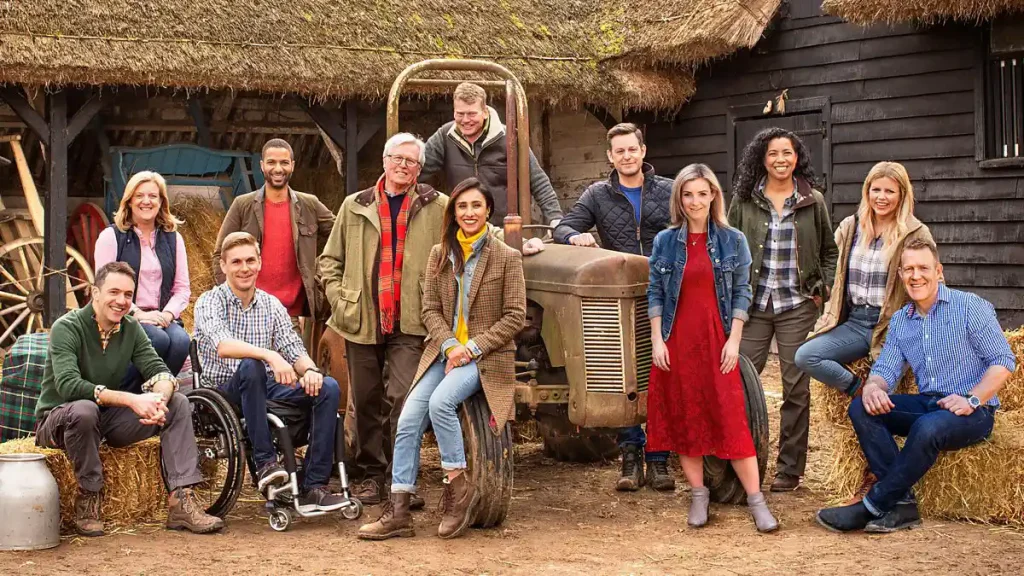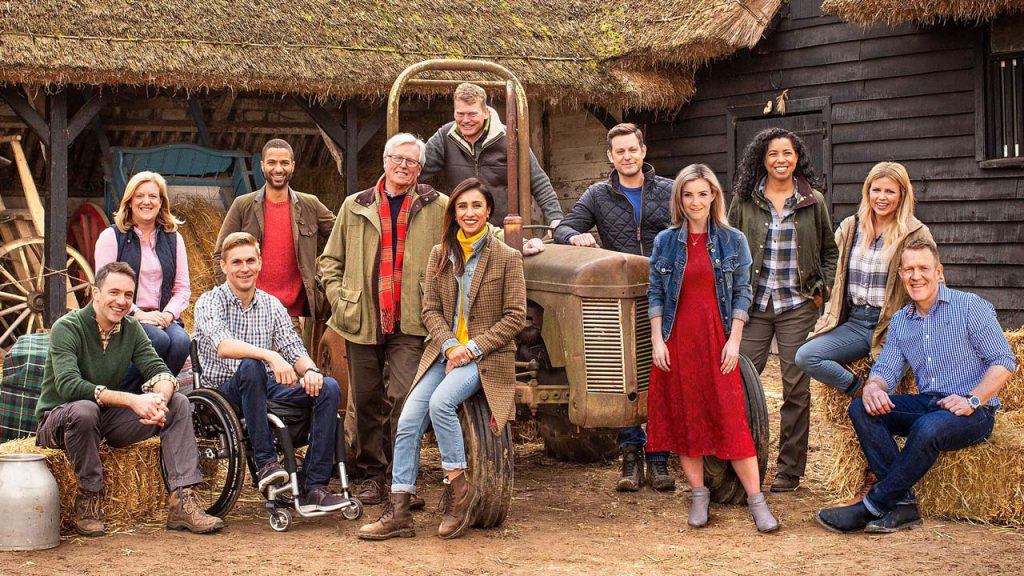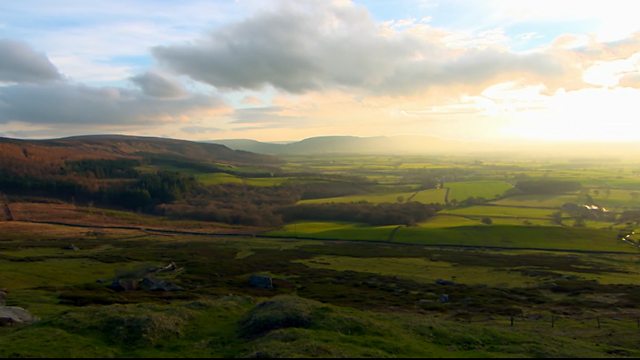Countryfile – West Exmoor: Sean Fletcher and Anita Rani venture into the rugged, untamed beauty of West Exmoor, where the rolling hills and winding valleys are witnessing transformative ecological changes. In this captivating episode of Countryfile, they uncover the innovative strategies being used to rejuvenate nature by reintroducing large animals to these ancient landscapes, aiming to restore the delicate balance of the ecosystem.
Sean delves into a fascinating project that is reshaping the wetlands of Exmoor. Here, he encounters a herd of water buffalo, introduced as part of an ambitious rewilding effort. These unusual “ecosystem engineers” are being released to roam freely across the wetlands, where their natural behavior—such as wallowing in mud and grazing—helps create the ideal conditions for wetland habitats to flourish.
Their movements will transform these marshy areas into thriving ecosystems, where a variety of wildlife can thrive. As Sean observes the buffalo in their new habitat, he gains a deeper appreciation for their role in nature conservation and the critical importance of restoring wetlands, which serve as havens for countless species, including amphibians, birds, and insects.
Continuing his journey, Sean takes on another important task—rounding up Exmoor ponies, a native breed perfectly adapted to the region’s harsh conditions. With the help of local farmers and conservationists, Sean helps corral 23 of these hardy ponies, each set to undergo their annual health check. These ponies, integral to the region’s cultural heritage, also play a vital role in managing the landscape, as their grazing patterns help maintain the balance of the moorland vegetation. Sean learns about the importance of ensuring the well-being of these animals, not just for the sake of the species, but for the health of the wider ecosystem.
Meanwhile, Anita Rani turns her attention to a different kind of landscape management—one that involves a rather unusual ally: pigs. On Exmoor’s hillsides, Anita watches as a herd of Mangalitsa pigs—an ancient and distinctive breed known for its woolly coats—root through the underbrush, completely unaware of the impact they’re having on the environment. Their constant digging and foraging help clear dense vegetation, inadvertently creating the perfect conditions for the rare high brown fritillary butterfly to thrive.
Anita learns how the pigs’ seemingly chaotic activity is part of a carefully designed conservation strategy aimed at increasing biodiversity, providing a habitat for species like the high brown fritillary, which relies on open, sunny spaces to flourish. The pigs may not know it, but they are vital to the survival of this endangered butterfly, and their actions underscore the surprising ways in which animals can be harnessed to benefit nature.
The episode also takes a historical turn, with a nod to the region’s cultural and intellectual heritage. West Exmoor, with its remote and rugged landscapes, holds special significance for mathematician and writer Ada Lovelace. Anita delves into Lovelace’s connection to the area, exploring how the tranquil yet wild surroundings inspired one of the great pioneers of computing. Lovelace’s story adds an unexpected layer of depth to the episode, reminding viewers of the long-standing relationship between people, place, and creativity. Her ties to Exmoor serve as a powerful reminder of how landscapes can inspire groundbreaking ideas and innovation, even in fields as seemingly distant as mathematics and technology.
Countryfile – West Exmoor
Back on the ground, the focus shifts to a team of rangers who are working tirelessly to protect Exmoor’s woodlands from the encroachment of deer. These rangers have an uphill battle ahead of them, as the increasing number of deer threatens the delicate balance of the forest ecosystem. By keeping the deer population in check, the rangers are helping to ensure that the woodlands can regenerate, providing habitat for countless other species. Their dedication to preserving this fragile ecosystem is a testament to the broader conservation efforts that are transforming West Exmoor.
As the episode wraps up its exploration of Exmoor’s environmental initiatives, viewers are taken on a brief detour to the Cotswolds, where Adam Henson continues to struggle against the elements. Persistent bad weather has put a damper on his harvest efforts, leaving crops in the field longer than anticipated. But there’s a silver lining to this weather-related setback: Adam’s youngest lambs, now fully grown, are finally ready for market. While the unpredictability of farming life is on full display, Adam’s unwavering dedication to his animals and crops shows the resilience needed to thrive in the face of nature’s challenges.
In this episode of Countryfile, the beauty of West Exmoor’s landscapes is matched only by the complexity of the efforts to restore and protect them. From water buffalo engineering wetlands to Exmoor ponies preserving moorlands, Mangalitsa pigs fostering rare butterflies, and rangers safeguarding woodlands, the show offers an inspiring glimpse into the interconnectedness of nature and the innovative approaches being taken to ensure its survival. Whether it’s the practical challenges of animal management or the philosophical reflections on the relationship between people and place, Countryfile delivers a rich and rewarding exploration of the ways in which humans and animals alike are working to shape the future of the natural world.
Conclusion Countryfile – West Exmoor
In conclusion, this episode of Countryfile – West Exmoor paints a vivid picture of the evolving relationship between humans, animals, and the environment in West Exmoor. The exploration of rewilding efforts, including the introduction of water buffalo to restore wetland habitats, highlights the power of nature-based solutions in conservation. These “ecosystem engineers” demonstrate how large animals can play a pivotal role in restoring the delicate balance of ecosystems, underscoring the importance of innovative approaches to biodiversity preservation.
Sean Fletcher’s experience with the Exmoor ponies emphasizes not only the cultural heritage of these animals but also their crucial role in maintaining the landscape. Their management is a reminder of the intertwined fates of species and habitats, where the well-being of one directly impacts the other. This interconnectedness is further exemplified by Anita Rani’s encounter with the Mangalitsa pigs, whose natural behaviors are being harnessed to promote the survival of the endangered high brown fritillary butterfly. This strategy speaks to the creativity and ingenuity behind modern conservation efforts, which recognize the value of working with nature’s inherent processes to restore balance.
The episode also highlights the broader cultural and intellectual significance of the Exmoor landscape through Ada Lovelace’s connection to the region. Her story offers a reminder of how nature can inspire innovation and creativity across diverse fields, linking the past to present-day environmental challenges. Additionally, the dedication of the rangers working to protect Exmoor’s woodlands from deer encroachment illustrates the tireless effort required to preserve these fragile ecosystems, demonstrating the ongoing battle to maintain ecological harmony.
As the episode transitions to the Cotswolds, the realities of farming in the face of unpredictable weather add a sobering contrast to the conservation work in Exmoor. Adam Henson’s perseverance in managing his livestock despite the challenges of a delayed harvest showcases the resilience needed in both agriculture and environmental stewardship.
In summary, Countryfile offers a comprehensive and inspiring look at the multifaceted efforts to conserve and restore the landscapes of West Exmoor. The episode not only sheds light on innovative conservation techniques but also reinforces the importance of our relationship with nature, encouraging viewers to consider how both humans and animals contribute to the future of the natural world.
F.A.Q. Countryfile – West Exmoor
Q.: What is the main focus of the Countryfile episode on West Exmoor?
A.: The episode centers on the transformative ecological changes in West Exmoor, focusing on efforts to restore balance to the landscape through rewilding. This includes the reintroduction of large animals like water buffalo to restore wetlands and Exmoor ponies to manage moorlands.
Q.: How do water buffalo contribute to the restoration of Exmoor’s wetlands?
A.: Water buffalo act as “ecosystem engineers” by grazing and wallowing in wetland areas, which helps to create ideal conditions for the development of thriving wetland habitats, benefiting a variety of species, including amphibians, birds, and insects.
Q.: What role do Exmoor ponies play in the local ecosystem?
A.: Exmoor ponies help maintain the balance of the moorland vegetation through their grazing patterns. By keeping the vegetation in check, they ensure the landscape remains healthy and diverse, contributing to the overall ecosystem stability.
Q.: How do Mangalitsa pigs support biodiversity on Exmoor?
A.: Mangalitsa pigs help increase biodiversity by rooting through the underbrush, clearing dense vegetation. This creates ideal conditions for species like the high brown fritillary butterfly, which thrives in open, sunny areas.
Q.: Why is Ada Lovelace mentioned in this episode?
A.: Ada Lovelace is highlighted for her connection to the West Exmoor landscape, which inspired her groundbreaking contributions to mathematics and computing. Her story emphasizes the cultural and intellectual significance of the area, blending history with environmental conservation themes.




